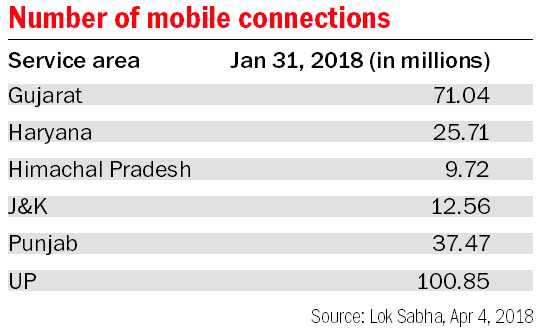
THE Draft National Digital Communications Policy spells out the bold vision of the government to deliver a digitally empowered India that provides access to a plethora of new communication technologies in an affordable and equitable manner. The task is certainly a formidable one, not because India's demographic profiles vary widely across various indices such as literacy, economic conditions and urbanisation, but also due to increasing convergence of complex technologies. Thus, it is critical that the proliferation of digital economy, as envisaged by the draft of the communications policy, is inclusive and promotes all-round social and economic development.
In fact, the benefits of Digital India have started to percolate to the masses and adoption of technology is making significant contribution to ease of living. With over a billion mobile phones and half a billion internet users, India's mobile data consumption is already the highest in the world. Over 200 million Indians regularly use social media and in the last year alone, over 200 million Indians took to mobile banking and digital payments. According to the government, at the current pace of digitisation and digitalisation, it is estimated that India's digital economy has the potential to reach $1 trillion by 2025.
In this backdrop, the draft has set some challenging goals for the government to further augment nation's communication prowess. By 2022, for example, the policy aims to provide universal broadband coverage at 50 mbps to every citizen. It also aims for 1 gbps connectivity to all gram panchayats by 2020 and 10 gbps by 2022. The spadework for taking high speed internet to the hinterland and far-flung areas is already underway with world's largest rural optic fibre rollout under ‘BharatNet’ that aims to connect 600,000 villages by broadband. Among other key highlights, the draft plans 100 mbps broadband on demand for all key development institutions, provide fixed line broadband access to 50 per cent of households and deploy 10 million public Wi-Fi hotspots by 2022.
It is also encouraging to note that the draft policy talks about the need to focus on emerging technologies like 5G, Artificial Intelligence, Robotics, Internet of Things (IoT), machine to machine services and Cloud Computing and leverage them for faster communication in a secured environment. The coming decades belong to these technologies and a robust domestic R&D and manufacturing, which extensively works on harnessing these technologies to suit our local requirement, can prove to be extremely beneficial.
Such technologies can empower even small farmers to turn digital and increase their income through higher crop yield with better price management. Farmers can get precise information on when to sow the seeds, whether the crop is at the risk of pest attack due to weather conditions, and the price outlook. Importantly, all this information can come on a simple mobile phone and in the farmer's native language.
The draft digital communications policy lays out the roadmap for next technological evolution with its ambitious targets and can prove to be a game changer for India as we step into the era of new age technologies. The key, however, lies in its implementation. The policy's objectives will turn out to be a success only if a strong backhaul is created that can cater to the expected spurt in data consumption with hundreds of applications becoming a way of life. If implemented well, an entire digital ecosystem will be created that will also generate millions of new jobs not just in the communications sector but also become a key enabler for job creation in other segments of the economy.
— The writer is an Executive Vice President of Vihaan Networks Limited



























